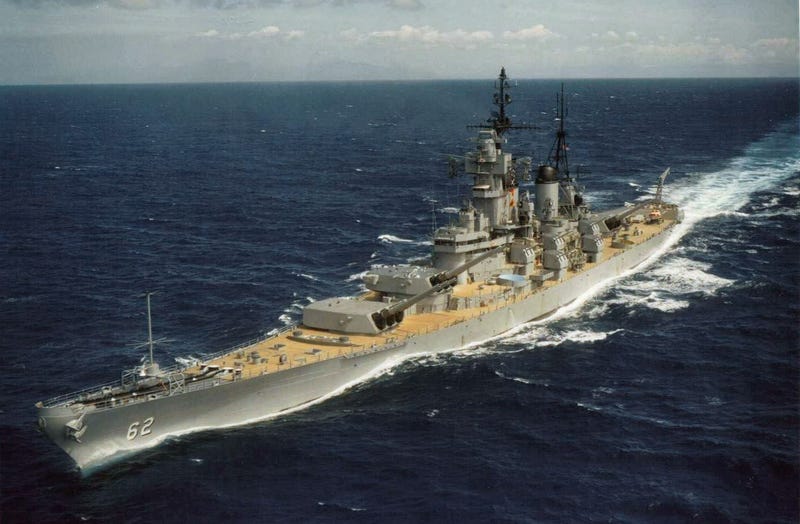

Each turret was also installed with an optical range finder and ballistic analog computer.

The turret interiors were subdivided and so designed as to permit the independent loading, elevation and firing of each gun. The ships could fire any combination of their guns, including a broadside of all nine. The turrets (technically they are "gunhouses") were "three-gun", not "triple", because each barrel could be elevated and fired independently. The turrets themselves cost US$1.4 million each, to which the cost of the guns had to be added. Each turret required a crew of 79 men to operate. At maximum range the projectile spent almost 1½ minutes in flight. They fired projectiles weighing from 1,900 to 2,700 pounds (850 to 1,200 kg) at a maximum speed of 2,690 feet per second (820 m/s) with a range of up to 24 miles (39 km). These guns were 50 calibers long-or 50 times their 16-inch (406 mm) bore diameter which makes the barrels 66.6 feet (20 m) long, from breechface to muzzle. The new 16"/50 Mark 7 was designed to resolve this conflict. However, the Bureau of Construction and Repair assumed that the ships would carry a new, lighter, more compact 16"/50 and designed the ships with barbettes too small to accommodate a 16"/50 Mark 2 three-gun turret. ĭue to a lack of communication during design, the Bureau of Ordnance assumed the Iowa class would use the 16"/50 Mark 2 guns constructed for the 1920 South Dakota-class battleships. This is how they work turret on Iowa and guns.


 0 kommentar(er)
0 kommentar(er)
